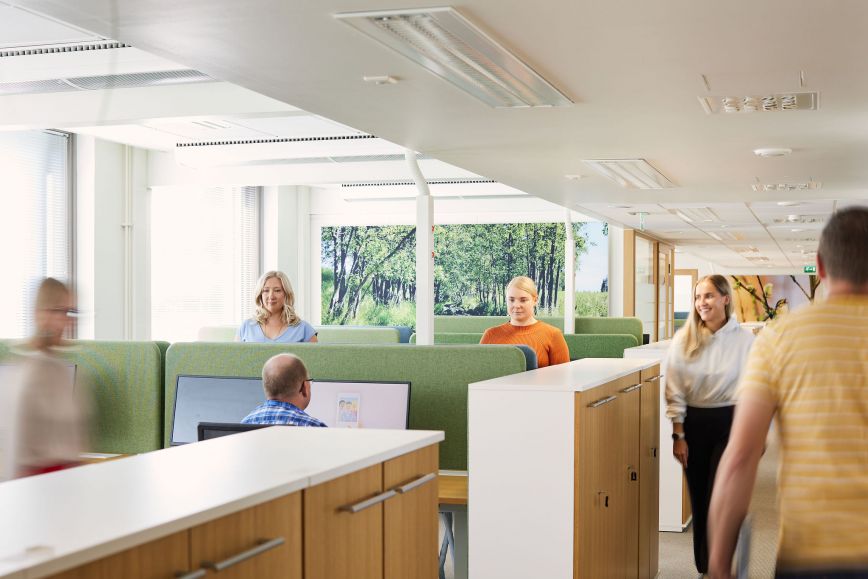Towards jointly used facilities
The National Land Survey of Finland (NLS) is part of the Government’s service and facility network reform, which aims to build a single shared customer service network for central government and the Social Insurance Institution of Finland (Kela) and have more compact facilities in accordance with the Government’s facility strategy. The first jointly used service locations in accordance with the reform were opened in Lappeenranta, Lahti and Joensuu this year. The NLS is also engaged in facility cooperation on a smaller scale in several locations with the Finnish Tax Administration, among others.
The reform seeks a customer-driven and systematic approach, as well as cost efficiency. At the same time, it promotes Finland’s carbon neutrality goal.
‘We are actively monitoring and rationalising the way we use facilities in cooperation Senate Properties, the facility manager. This year, the occupancy rate was measured in all facilities with more than 30 people, according to which remote work remains a popular choice and the occupancy rate of offices is low. This information is useful when planning upcoming changes in the work environment. It is important that we can dimension our facilities correctly,’ says Elina Aaltonen, Facilities Services Manager at the NLS.
The NLS has improved its facility efficiency steadily in recent years. In 2019, for example, it was more than 21 m2 per annual work unit (AWU), while the corresponding figure currently is 16.5 m2 per AWU. Facility efficiency will improve further when the NLS’s larger locations will also shift to jointly used work environments.
The development of the service and facility network will continue throughout this decade. This change will concern more and more NLS employees in the future.
‘We will also use the pilot sites completed this year to collect experiences of the functioning of the social work environment. We should also hold on to all the fun stuff among our own people after the work environment has changed. Our employees should take a coffee break at the same time with their colleagues and set up meetings to talk to each other. Enjoying the sense of community after this change may require a bit of extra work to find the right way of being together,’ Aaltonen says.
IT procurement chains under the microscope
In 2022, the agencies under the branch of administration of the Ministry of Agriculture and Forestry conducted a bidding process for the procurement of IT expert services. A common framework arrangement will enable agencies to provide their services using uniform methods and common solutions – efficiently and sustainably. At the same time, the flow of information and transparency can be improved between procurement units. Sustainability was also included in the bidding process: companies that signed up for the framework arrangement were awarded points for their own sustainability programmes.
‘This year, we have analysed subcontracting chains in the framework arrangement, which guides subcontractors to operate in a certain way. Subcontracting agreements can be adjusted once a year, and the contractual partner must identify their subcontractor’s finances and debts, as well as other similar information. It must be ensured separately that a subcontractor is not within the scope of the EU’s sanctions. All agencies participating in a joint procurement process have access to the same information through a single check,’ says Kimmo Perttilä, Senior IT Specialist at the NLS.
The NLS procures IT equipment and accessories through Valtori, the Government ICT Centre. For example, the NLS procures plotters for printing maps, multifunction devices and accessories related to them.
‘Every time equipment or accessories are procured, we ensure that the supply chain is appropriate and that the replaced devices are recycled securely,’ Perttilä says.
The goal is that sustainability aspects will be addressed more broadly in bidding processes in the future.
More information
Sustainability Specialist Annukka Kokkonen, 050 467 0911, firstname.lastname@nls.fi
Acts of sustainability: Competence development and cooperation between teams
Acts of sustainability: More electronic tools and less unnecessary material
Acts of sustainability: Promoting a diverse and equal working life
Acts of sustainability: Drones and open source to serve society

